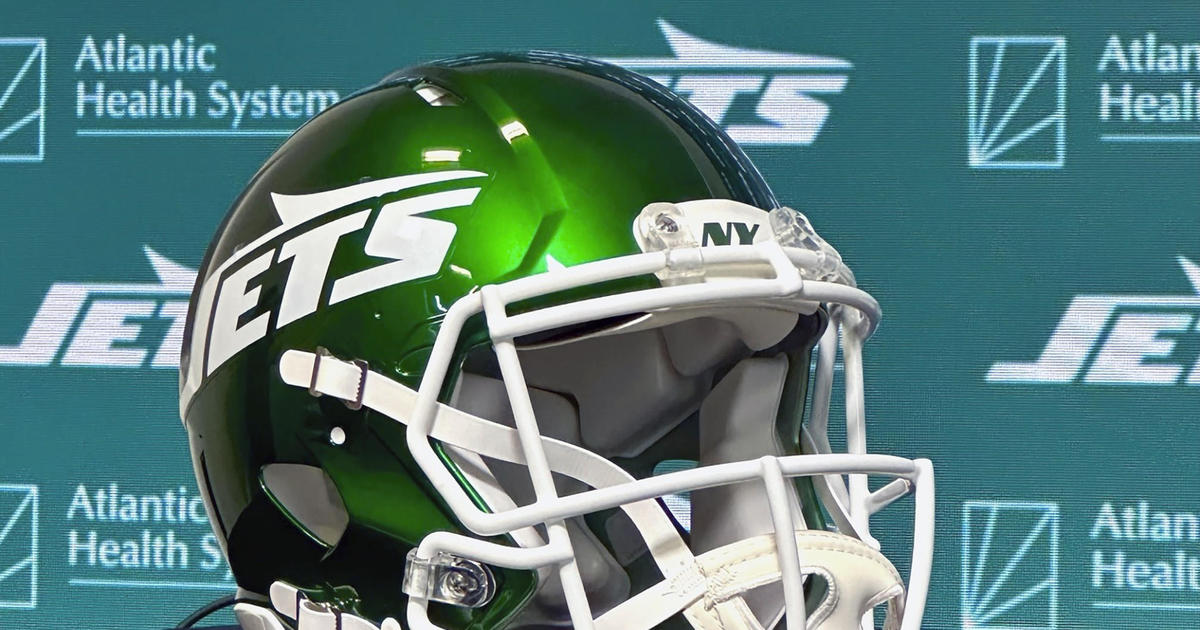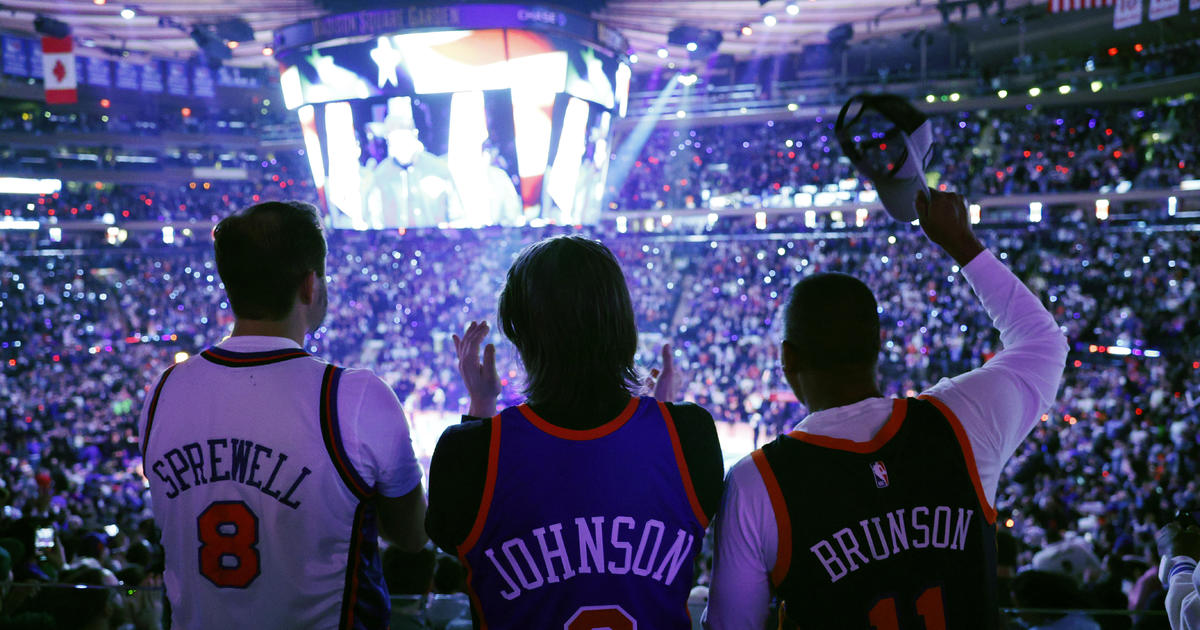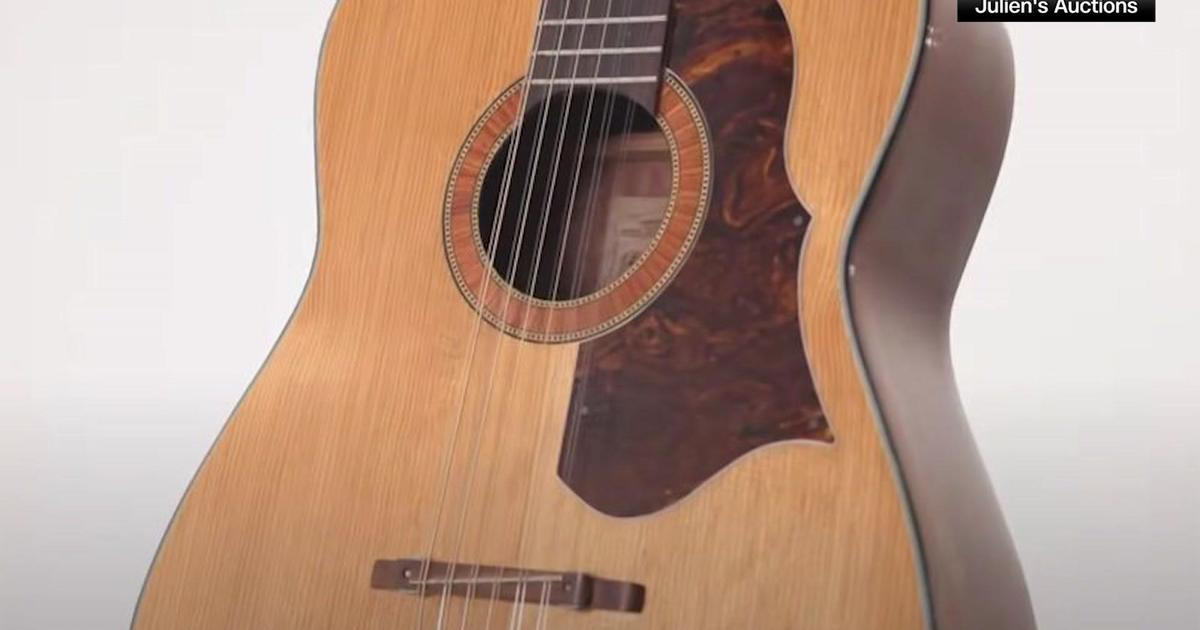NFL Prepares Its Biggest Game For The Biggest Stage In New York
NEW YORK (CBSNewYork/AP) -- Fans in the stands at Super Bowls past only think they've seen it all.
They've been sun-burned in Los Angeles, soaked in Miami and buffeted by winds at stops in between. Deafened during flyovers. Titillated at halftime, blacked out mid-game and even moved to tears by tributes to servicemen, veterans and the victims of 9/11.
Even so, this next Super Bowl promises those in attendance something different: The chance to freeze their rear ends off.
On Feb. 2, 2014 — the date could still be changed if a Nor'easter rolls in off the Jersey Shore — every one of the 82,000 or so ticketholders entering MetLife Stadium will receive a gift bag. Inside are a seat cushion, muffler, ski gaiters, three pairs of hand- and foot-warmers, lip balm and a package of tissues, plastered with enough logos to make a NASCAR driver jealous.
The Super Bowl has been played in northern cities four times before — inside climate-controlled domes — but never outdoors. The average daily low for East Rutherford, N.J., in early February is 22 degrees, with temperatures typically falling throughout the night, when the game will be played. Snow, wind and rain, or all three at once, is not out of the question. Exactly how much protection all that swag provides against Mother Nature's wrath remains to be seen.
"We can't provide them with coats," said Frank Supovitz, the NFL's vice president in charge of preparations for the game. "But we will be strongly encouraging them to stay in their seats."
Which begs the question: If the game is for the fans, why stage it outdoors in the New Jersey-New York metro area precisely when the trusty Farmer's Almanac, hardly alone among forecasters, is predicting a blizzard?
Money.
NFL commissioner Roger Goodell and his owners are taking advantage of a lull in the tourism calendar to turn a swath of Manhattan into a playground and make cash registers sing. A 180 foot-tall toboggan slide will be plopped down in Times Square, and a stretch of Broadway from 34th Street to 48th will be closed to traffic, renamed "Super Bowl Boulevard," and converted into a rollicking theme park, merchandise shop and concert venue called the "NFL Experience."
SCHWARTZ: THE SUPER PARTY IS COMING TO NEW YORK
For a week, kids will punt, pass and kick while their parents shop for replica jerseys in locales where bankers and account executives usually gobble down lunch. It won't be the only place on an already crowded spit of land where jaded New Yorkers trade elbows with their guests. As many as 200,000 out-of-towners will be cast in the role of Jack Lemmon in the movie of the same name, dazzled by the goings-on and trying not to get fleeced by savvy hoteliers and street vendors.
Already, reports are circulating about prices being tripled, with modest hotel rooms in Midtown jacked to $1,000 a night, and even more modest accommodations across the Hudson River in New Jersey, close to MetLife Stadium, offered at the princely sum of $600. That's on top of what's already the highest ticket prices ever — ranging from $500 to $2,600 — a hike the NFL candidly acknowledged was intended to make life tough on scalpers.
But hustlers won't be the only folks forced to improvise.
Plans for the event have been three years in the making, but depending on weather, they might not be finalized until the last minute. Moving fans across the region, even aided by the nation's most extensive public transportation network, presents a logistical nightmare — even before security considerations are factored in.
"You've got two states, separated by a river, and people from the five boroughs and eight or nine counties in New Jersey all heading for the same place in a matter of hours," said Al Kelly, who heads up the host Super Bowl committee. "What we have is a series of contingency plans where priorities shift according to the day and in some cases hour by hour. ... If a storm hits one day, we'll shift resources to clearing certain roads and bridges; if it lands somewhere else at a different time, we could be forced to change the entire blueprint.
"The one thing we better be," Kelly said finally, "is nimble."
But it's not just the region's reputation on the line.
By waiving the normal Super Bowl specifications to grease New York's winning bid in 2010 — previously, bid cities were required to average 50-degree temperatures during game week — Goodell and his owners are out to prove the proposition Frank Sinatra laid out in "New York, New York." Namely, that if you can make it there, you can make it anywhere.
Since taking over as commissioner in 2006, Goodell has made securing new stadiums or renovating existing ones for his already wealthy owners — almost always with some level of taxpayer-financing — every bit as much a signature issue as player safety. It's no coincidence that all five of the stadiums that have, or will, come online during his tenure have already been awarded the big game.
Nor is Goodell above dangling the carrot of a future Super Bowl as a reward to cities and states willing to throw tax dollars into stadium pots. With 19 of the league's 32 teams situated within winter's reach — six already have domed stadiums — a successful Super Bowl outdoors could put the entire U.S. map in play for his pitch.
New York might seem like a tough place to set a precedent. It's already a nexus for many of the world's financial, entertainment and media empires, and chaotic on its quietest day. Just rising above that clutter is no small feat. And even if the NFL does a bang-up job, it won't turn around and ask the region's taxpayers for help anytime soon. MetLife Stadium opened for business in April, 2010, with the $1.6 billion construction cost covered jointly by the co-tenants, New York's Giants and Jets, using private funds.
"The other thing that's important," said Giants co-owner John Mara, the third generation of his family to run the club, "is that all of us, across the NFL for many years, said over and over that so many of the most memorable games ever played were played in extreme weather.
"So why not here?"
The coldest Super Bowl on record was played in Tulane University's stadium in 1972 — temperature at kickoff: 39 degrees — back when the big game was still a small event. More relevant in this case were the 2000 and 2011 Super Bowls, when late-arriving storms turned Atlanta and Dallas, respectively, into ghost towns. Though both games were played in domes, much of Atlanta was frozen over and inaccessible; Dallas did a face-plant in the four inches of snow that fell early in the week, mostly shutting down instead of shoveling out.
At the moment, the NFL is one of the slickest, best-run conglomerates on the planet. It has the kind of monopolistic hold on American sports that Microsoft once exercised over technology. The league takes the lion's share of sports-related TV dollars, ad revenues and airtime, and routinely crushes rivals in head-to-head, time-slot matchups. That's why the date of the Super Bowl has creeped from its traditional Sunday spot late in January to the first week of February, which just happens to be the start of sweeps month.
Next year's big game will be viewed by 100 million-plus people in the United States, and depending on whose numbers are crunched, it's already the most-watched annual sporting event around the world. Only the Olympics and the original futbol — with its World Cup and UEFA Champions League final showcases — can offer an argument. So no matter how many fannies are frozen off inside MetLife, the fans are essentially extras in a show practically guaranteed to be a hit.
Last year's Super Bowl, matching Baltimore against San Francisco inside New Orleans' Superdome, joined nearly two dozen of its predecessors on the short list of most-viewed television broadcasts in U.S. history. That despite a 34-minute stretch early in the third quarter when an electrical failure cut the lights over much of the stadium, delaying the game and sending fans at home scurrying to their refrigerators.
No one was surprised those fans returned in droves soon after to watch a game that wasn't decided for the Ravens until the final play. But it mystified some, and outraged others, that the power went out in a building to which taxpayers have contributed, in installments over the years, about $1 billion to build and then renovate after Hurricane Katrina swept through in 2005.
Ravens linebacker Ray Lewis, who retired after that game, and his old sidekick, Terrell Suggs, came up with a conspiracy theory of their own. Both pointed a finger at Goodell, suggesting without so much as a shred of evidence that he threw the switch so the 49ers could climb back into the game.
"You're a zillion-dollar company, and your lights go out? No," Lewis said. "No way."
Apparently, he won't have to worry about that this time around, no matter how cold it gets.
"The one thing I feel really confident about," Mara said, "is that the lights won't go out."
You May Also Be Interested In These Stories
(TM and © Copyright 2013 CBS Radio Inc. and its relevant subsidiaries. CBS RADIO and EYE Logo TM and Copyright 2013 CBS Broadcasting Inc. Used under license. All Rights Reserved. This material may not be published, broadcast, rewritten, or redistributed. The Associated Press contributed to this report.)



